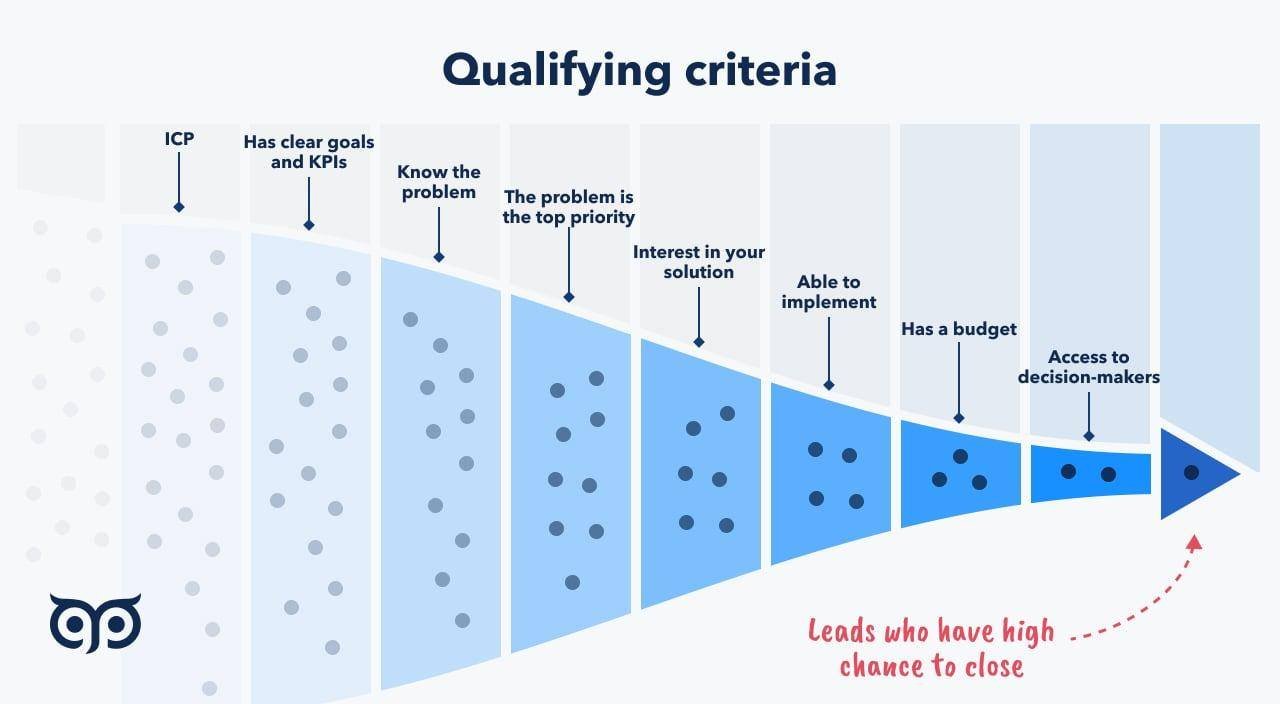In the bustling world of sales, where every conversation counts and every lead matters, Sales Development Representatives (SDRs) serve as the frontline warriors, tirelessly pounding the virtual pavement to connect with prospects.
Yet, behind the scenes of this high-energy role lies a labyrinth of challenges that can make the journey feel daunting.
From the unpredictability of client responses to the ever-evolving landscape of sales technology, SDRs face hurdles that can sometimes feel insurmountable.
But fear not!
In this friendly exploration, we’ll delve into the common challenges SDRs encounter and unveil creative solutions that can transform obstacles into opportunities. So grab a coffee, settle in, and let’s unlock the secrets to thriving in the fast-paced realm of sales development together!
Table of Contents
ToggleNavigating the Rough Waters: The Reality of SDR Challenges
The daily grind of cold calling, navigating gatekeepers, and dealing with rejection is not for the faint-hearted. However, recognizing these challenges is the first step towards overcoming them.
The relentless pressure to meet quotas can be daunting. SDRs often face immense stress due to the constant need to achieve targets.
It’s crucial to adopt strategies that lighten the workload.
For instance:
- A structured daily plan to ensure every hour is productive.
- Use of CRM tools to track and manage leads effectively.
- Implementing short breaks to avoid burnout and maintain high energy levels.
Overcoming gatekeepers poses another significant hurdle. SDRs need to master the art of persuasion to get past these initial barriers. Polishing communication skills and crafting compelling pitches can make a significant difference. Practicing empathy and actively listening to gatekeepers also helps in making them more receptive.
Common SDR Challenges & Solutions
| Challenge | Solution |
|---|---|
| Heavy Workload | Utilize AI for task automation. |
| High Rejection Rate | Develop thicker skin and review call recordings for improvement. |
| Navigating Gatekeepers | Enhance communication skills and build rapport. |
Building and maintaining motivation levels is yet another challenge. Regular team-building activities and positive reinforcement can significantly boost morale.
Celebrating small wins and acknowledging the hard work of SDRs not only keeps them motivated but also fosters a positive work environment.
Mastering Time Management for Maximum Productivity
Mastering time management not only helps increase productivity but also ensures a healthier work-life balance.
Here are some strategies and techniques that can transform your daily workflow and maximize your efficiency.
Techniques to Enhance Time Management
Incorporating proven time management techniques into your routine can have substantial impacts on your output. Some popular methods include:
- Time Blocking: Allocate specific blocks of time for different tasks throughout your day. This ensures you dedicate uninterrupted time to crucial activities like prospecting, follow-ups, and meetings.
- Pomodoro Technique: Work in focused intervals of 25 minutes followed by 5-minute breaks. This keeps your mind fresh and reduces burnout.
- ABC Priority Method: Categorize tasks into A (urgent and important), B (important but not urgent), and C (neither urgent nor important). This helps you focus on high-priority tasks first.
Effective Use of Tools
Leveraging the right tools can streamline many of your daily tasks. Here are a few recommendations:
| Tool | Primary Use | Benefits |
|---|---|---|
| Trello | Task Management | Visual task tracking and organization |
| Calendly | Scheduling | Eliminates back-and-forth emails for setting meetings |
| RescueTime | Time Tracking | Detailed analysis of how time is spent |
Tips to Stay Focused
Maintaining focus is crucial for SDRs amidst the chaos. Here are some tips:
- Set Clear Goals: Break down your larger goals into smaller, manageable tasks. This keeps you motivated and steadily progressing.
- Minimize Distractions: Use apps or browser extensions to block distracting websites and notifications during work hours.
- Take Regular Breaks: Short, frequent breaks can boost your productivity and creativity.
By adopting these techniques, leveraging helpful tools, and staying focused, SDRs can master time management and achieve peak productivity. Remember, the key is to be consistent and find what works best for you.
Building a Bulletproof Prospecting Strategy
Creating a formidable prospecting strategy hinges on navigating the common challenges faced by Sales Development Representatives (SDRs).
From identifying the ideal customer profile to handling the nuances of outreach, the hurdles can be many, but each one can be met with innovative solutions.
- Pinpointing the Ideal Customer Profile: The starting point for any prospecting strategy is identifying who you should be targeting. Misidentifying prospects can lead to wasted time and effort. Utilize tools like CRM data analytics and buyer personas to hone in on your ideal customer profile. Regularly review and update this profile to ensure accuracy.
- Crafting Personalized Outreach: Mass emails and generic messages often fall flat. Instead, personalize your outreach by leveraging insights from social media, company blogs, and recent news. By showing you understand and genuinely care about the prospect’s needs, you’ll increase engagement rates.
Effective use of tools is crucial in streamlining and enhancing your prospecting efforts. Here’s a brief table showcasing essential tools that can make a difference:
| Tool | Purpose |
|---|---|
| LinkedIn Sales Navigator | Finding and connecting with prospects |
| HubSpot CRM | Managing and tracking interactions |
| ProspectingToolkit | Get leads from LinkedIn and automate outreach |
- Consistent Follow-Up: Persistence is key, but not to the point of annoyance. Striking the right balance with follow-up communications can dramatically improve response rates. Use a CRM to set reminders and automate follow-ups, ensuring no potential lead slips through the cracks.
- Handling Rejections: Receiving a “no” is a natural part of prospecting. The key is to remain positive and use these rejections as learning opportunities. Ask for feedback whenever possible, which can provide valuable insights to refine your approach.
By acknowledging these challenges and implementing these tailored solutions, SDRs can build a resilient and effective prospecting strategy, paving the way for greater success and more meaningful connections.
Turning Rejection into Opportunity: Crafting Resilient SDRs
Rejection is an inherent part of a Sales Development Representative’s (SDR) journey, but with the right mindset, it can transform into an invaluable opportunity for growth.
At its core, it’s about building resilience and continuous learning. Here’s how to cultivate an environment where SDRs can flourish despite setbacks.
- Embrace Feedback: Immediate feedback helps SDRs understand what went wrong and how to improve. Consistent and actionable feedback turns each “No” into a learning moment.
- Celebrate Small Wins: Closing the deal might be the ultimate goal, but every milestone–from securing a meeting to positive engagement–should be celebrated. Small victories boost morale and build momentum.
- Mindset Training: Foster a growth mindset by encouraging the view that abilities and intelligence can be developed. Training sessions that focus on mental toughness and resilience can be game-changers.
Providing tools and training is essential, but instilling a supportive culture is where true transformation happens.
Encourage peer-to-peer learning and collaboration by creating an open environment where SDRs can share their experiences, challenges, and successes without fear.
| Strategy | Benefit |
|---|---|
| Role-Playing | Prepares SDRs for real-world scenarios through practice and feedback. |
| Peer Reviews | Fosters a culture of continuous improvement and mutual support. |
| Resilience Workshops | Builds mental toughness and equips SDRs with stress-coping mechanisms. |
Most importantly, recognize that every rejection is one step closer to a “Yes”. Encourage your SDRs to revise their approach based on learnings from previous interactions.
Over time, they will develop a tenacity that not only improves their performance but also enhances their overall job satisfaction.
By turning rejection into a stepping stone, SDRs can harness the power of setbacks to propel forward. This transformation not only increases their effectiveness but also fosters a resilient, positive, and motivated sales team ready to tackle any challenge.
Supercharging Communication Skills for Better Engagement
Here are some effective strategies to enhance your communication skills and ensure better engagement:
Prioritize Active Listening: This isn’t just about hearing what your prospects say, but truly understanding their needs and concerns. By practicing active listening, you can tailor your responses more effectively, making your prospect feel valued and understood. Emphasize on maintaining eye contact, nodding, and providing feedback to show that you are engaged in the conversation.
Be Assertive: Being assertive means expressing yourself clearly and confidently while respecting the opinions of others. This balance can help you convey your message effectively without seeming aggressive. Assertiveness can not only improve your communication but also boost your self-esteem and decision-making skills. Remember to stay respectful and open-minded to build strong, positive relationships [[2]].
Leverage Interpersonal Skills: Strong interpersonal skills can significantly enhance the way you communicate with colleagues, managers, and clients. These skills include empathy, teamwork, and conflict resolution. By strengthening these areas, you can improve your interactions, making them more meaningful and productive. Try incorporating feedback and actively engaging in brainstorming sessions to demonstrate your interpersonal prowess [[3]].
Table of Key Communication Strategies:
| Strategy | Description |
|---|---|
| Active Listening | Understand and address your prospect’s needs by truly hearing them. |
| Assertiveness | Express yourself clearly and confidently while respecting others. |
| Interpersonal Skills | Enhance teamwork, empathy, and conflict resolution to improve interactions. |
Implementing these techniques can transform your communication approach, leading to more meaningful and effective interactions.
Keep practicing and refining your skills to ensure sustained engagement and success in your role.
Leveraging Technology: Tools and Tricks for SDR Success
In today’s fast-paced sales environment, leveraging technology is essential for Sales Development Representatives (SDRs) striving for success.
Numerous tools are available to help streamline tasks, improve productivity, and enhance overall performance. But selecting the right tools and mastering their use can be challenging.
Here are some top technological tools and tricks that SDRs can use to overcome common challenges.
Customer Relationship Management (CRM) Systems
CRM platforms are indispensable for managing leads, tracking interactions, and organizing tasks. They enable SDRs to maintain a comprehensive view of prospects and automate follow-up processes.
- Salesforce: With its robust features, Salesforce helps save time on data entry and provides detailed analytics.
- HubSpot: Known for its user-friendly interface and integration capabilities, HubSpot supports outreach and follow-ups.
- Pipedrive: This tool is great for visual sales pipeline management and helps in prioritizing activities.
By integrating these powerful tools into their workflow, SDRs can significantly reduce manual work and focus on building meaningful relationships with prospects.
Embracing technology not only enhances efficiency but also provides crucial insights that enable more strategic decision-making.

Effective Lead Qualification Techniques for Smarter Outreach
Effectively qualifying leads can make the difference between a successful sales outreach and wasted efforts.
Ensuring that your outreach is data-driven and targeted is key to maximizing your SDR team’s productivity. Here are some essential techniques:
- Lead Scoring: Utilize a point-based system to evaluate the potential of each lead. Consider factors like demographic data, engagement level on your site, and past interactions. This method helps prioritize leads that show the highest likelihood of conversion.
- CRM Integration: Ensure your CRM system is updated with the latest information. By keeping track of all interactions and data in one place, SDRs are better equipped to tailor their outreach efforts and avoid redundant communication.
- Behavioral Analysis: Observe and analyze the behavior of leads on your digital platforms. Identifying patterns can give insights into their interests and readiness to buy, enabling more personalized and timely outreach.
A streamlined qualification process also relies on clear and concise criteria. This may include:
| Criteria | Description |
|---|---|
| Budget | Determines if the lead can afford your offering. |
| Decision-Making Authority | Identifies if the lead is in a position to make a purchasing decision. |
| Need | Assesses if your product or service addresses a specific need of the lead. |
| Timing | Estimates the ideal timeframe for potential purchase or engagement. |
Integrating technology can further enhance lead qualification. Tools like predictive analytics and AI can process vast amounts of data quickly, identifying trends and patterns that manual analysis might miss.
This smart use of technology helps SDRs focus their energy on leads that are most likely to convert, leading to more efficient and effective outreach.
Creating a Collaborative Environment with Sales and Marketing
This disconnection often results in unclear expectations, inconsistent messaging, and missed opportunities.
Creating a collaborative environment where these two departments work hand in hand can greatly enhance their effectiveness.
Here are some actionable solutions to foster collaboration:
- Regular Meetings: Schedule bi-weekly or monthly meetings where both teams can share insights, align on goals, and discuss what’s working or not working.
- Shared Platforms: Utilize CRM and marketing automation tools that provide transparency and seamless communication between sales and marketing data.
- Unified Goals: Set common KPIs to ensure that both departments are working towards the same objectives, such as increasing lead quality and conversion rates.
- Integrated Campaigns: Collaborate on creating and executing marketing campaigns that sales can leverage effectively, ensuring that both teams are aligned on messaging and targeting.
Another effective strategy is using feedback loops. SDRs are on the front lines and have valuable insights into customer pain points and objections. Creating a formal process where SDRs can provide feedback to the marketing team will help in refining content, messaging, and targeting strategies.
A practical tool to facilitate this collaboration is a shared content calendar. Below is a simple structure you can use:
| Week | Sales Focus | Marketing Content |
|---|---|---|
| 1 | Pipeline Generation | Lead Magnets & Case Studies |
| 2 | Lead Nurturing | Email Campaigns |
| 3 | Upselling | Webinars & Product Videos |
| 4 | Follow-Up | Blog Posts & Social Media |
By creating and maintaining such a calendar, both teams can stay in sync and ensure their activities support each other.
The benefits are manifold: improved lead quality, more coherent messaging, and ultimately, higher conversion rates.
Prioritizing Mental Health and Avoiding Burnout
As a Sales Development Representative (SDR), the hustle can be exhilarating, but it can also lead to burnout if mental health isn’t prioritized.
Mental health encompasses emotional, psychological, and social well-being, influencing every decision, interaction, and reaction we have [[1]].
To thrive, both personally and professionally, it’s crucial to integrate mental well-being practices into your daily routine.
Establish clear boundaries. In an SDR’s day, constant connectivity can blur the line between work and personal time. Schedule specific hours for work and ensure you unplug during your downtime. Taking breaks doesn’t mean you’re slacking – it means you’re respecting your mental limits. Even a short walk or a quick meditation session can recharge your energy and focus. Implementing these practices creates a healthy work-life balance, reducing stress and enhancing productivity.
Embrace supportive systems. Utilize technology not just for work efficiency but for mental support. Tools like Slack channels dedicated to mental health tips, virtual meditation sessions, or even simple gratitude journals can foster a positive work environment. Don’t shy away from reaching out to mental health professionals if needed; investing in your mental health is investing in your long-term career success.
| Action | Benefit |
|---|---|
| Setting Boundaries | Increased focus and reduced stress |
| Taking Breaks | Boosted creativity and productivity |
| Using Supportive Tools | Improved mental well-being |
| Seeking Professional Help | Long-term mental health benefits |
Cultivate a culture of communication. Connection is at the heart of mental health [[3]].
Regularly check in with colleagues and managers, and encourage open discussions about mental well-being.
This not only helps in identifying early signs of burnout but also fosters a supportive workplace where everyone feels valued and heard.
Team-building activities that promote relaxation, like group yoga sessions or virtual social hours, can enhance team morale and collective mental health.
Continuous Learning: Staying Ahead in the SDR Game
The Sales Development Representative (SDR) role is constantly evolving. To stay competitive, one must embrace continuous learning.
The rapid advancements in technology and changing buyer behaviors mean that the tactics that worked yesterday might not be as effective today. Here are some key strategies to keep up and stay ahead.
- Regular Training Sessions: Attending sales training programs regularly can help you stay updated with the latest strategies and tools.
- Network with Peers: Join SDR communities and forums, where you can exchange ideas and learn from others’ experiences.
- Embrace Technology: Use advanced CRM tools and analytics to better understand customer needs and streamline your sales processes.
Diving deeper into specific tools and techniques can also be highly beneficial. For instance, leveraging AI-driven sales tools can automate mundane tasks, giving SDRs more time to focus on strategic outreach efforts.
| Tool/Technique | Benefits |
|---|---|
| AI-Powered CRM | Automates data entry, optimizes lead scoring. |
| Sales Analytics | Delivers insights into buyer behavior and sales trends. |
| Virtual Training | Provides remote learning opportunities on advanced topics. |
The landscape may be challenging, yet the opportunities for growth and improvement are boundless. By investing in your development and staying ahead of trends, you not only enhance your own career but also bring immense value to your organization.
FAQ
What exactly is an SDR, and why do they matter?
SDR stands for Sales Development Representative. Think of them as the gallant knights of the sales realm, tasked with prospecting and qualifying leads. Their role is crucial because they lay the groundwork for the sales team, ensuring that by the time a lead reaches a salesperson, they are warmed up and ready to go! Without SDRs, leads could fall through the cracks like socks in a washing machine.
What are some of the biggest challenges SDRs face today?
One of the biggest challenges is the sheer volume of competition. With so many businesses vying for attention, SDRs often find themselves in a ‘cold call’ jungle, where prospects can be hard to reach and even harder to engage. Additionally, the rapid evolution of technology means SDRs must constantly learn new tools and techniques while juggling their daily quotas.
How do SDRs cope with rejection and maintain their spirits?
SDRs often deal with high rejection rates, but resilience is their secret weapon. Many SDRs find solace in developing a supportive team environment, sharing experiences, and lifting each other’s spirits. A sprinkle of humor, celebrating small victories, and practicing mindfulness can transform a ‘no’ into a stepping stone rather than a stumbling block.
What creative solutions can SDRs employ to overcome these challenges?
SDRs can leverage storytelling in their outreach, crafting compelling narratives that resonate with prospects instead of delivering a monotonous sales pitch. Additionally, personalization is key—using data insights to tailor messages can significantly increase engagement. embracing technology like AI-driven tools can help automate repetitive tasks, giving SDRs more time to build meaningful connections.
How do SDRs measure success, and what should they focus on?
Success for SDRs isn’t solely about hitting numbers. It’s about the quality of leads they generate and the relationships they build. Metrics such as the conversation-to-meeting ratio, response rates, and even feedback from prospects can provide a well-rounded view of their performance. Focusing on personal growth, learning new skills, and being adaptable to changes in the market can truly elevate their success!
What’s the best piece of advice for aspiring SDRs?
Whether you’re on your first quest or a seasoned warrior, the advice remains timeless: be curious and never stop learning! The world of sales is ever-evolving, and keeping an open mind to learn from both successes and setbacks will pave the way for tremendous growth. Remember, every ‘no’ gets you closer to a ‘yes’—so keep that chin up and forge ahead with confidence!
Final Thoughts:
In the ever-changing landscape of sales development, SDRs are on an adventure filled with both challenges and rewards. Balancing hard work with a dash of creativity and camaraderie gives them the tools to conquer whatever comes their way.
So, to all the SDRs out there: stay brave, stay innovative, and keep chasing those dragons! 🐉✨







